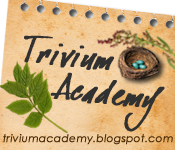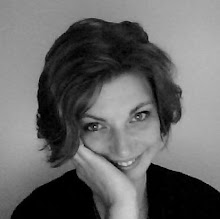This copywork is intended to go with the Earth Science/Space lessons that I created, however use them how you would like. I'm putting the lesson # and subject so that anyone can use them. We do science copywork once a week. The Earth Science lessons are free to download on the right under Lesson Plans.
Earth Science
Lesson 1: Geology
Geologists know Florence Bascom (1862–1945) as “the first woman geologist in this country.”
Lesson 2: Eclipse
Lunar eclipses can only occur during a full moon. Solar eclipses can only occur during a new moon.
Lesson 3: Hemispheres
The word hemisphere means half (hemi) of a sphere.
Lesson 4: Continental drift
The first detailed theory of continental drift was put forth by German meteorologist and geophysicist Alfred Wegener in 1912.
Lesson 5: Lightning
Lightning is a giant discharge of electricity accompanied by a brilliant flash of light and a loud crack of thunder.
Lesson 6: Minerals
A telephone contains over 40 different mineral materials, a television set has about 35, and an automobile about 15.
Lesson 7: Volcanoes
Volcanoes are like giant safety valves that release the pressure that builds up inside the Earth.
Lesson 8: Monsoon
The word monsoon comes from the Arabic word mausin, meaning season, because the storms return year after year at the same season of the year and are essential for crops.
Lesson 9: Avalanche
About 250,000 avalanches occur each year in the Alps, a mountain chain in Europe.
Lesson 10: Tides
Competition between the Sun and the Moon is what causes tides, the rise and fall of the ocean and other large bodies of water.
Lesson 11: Deep Sea
The deep sea is the largest habitat on earth and is largely unexplored.
Lesson 12: Caves
Caves harbor rare animal life, fragile mineral formations and irreplaceable archaeological objects.
Lesson 13: Deserts
Most deserts lie along the Tropic of Cancer and Tropic of Capricorn, imaginary lines that lie north and south of the equator.
Lesson 14: Grasslands
Grasslands would become a forest they received more rain. If grasslands received less rain, they would become a desert.
Lesson 15: Rainforest
A single rainforest reserve in Peru is home to more species of birds than are found in the entire United States.
Lesson 16: Arctic
In 2001, explorers Ann Bancroft and Liv Arnesen made history when they became the first women to cross Antarctica.
Lesson 17: Recycling
Recycling an aluminum can saves enough energy to run a television set for three hours or light a 100 watt bulb for an entire day.
Lesson 18: none
Astronomy
If you’re using the book Spinning Worlds from the lessons I created, you can use the quotes in it for copywork instead of these.
Lesson 1 : Moon
The key to a blue moon is having in the air lots of particles slightly wider than the wavelength of red light (0.7 micron), and no other sizes present.
Lesson 2: Sun
The Sun's temperature is 10,000 degrees Fahrenheit at the surface and 27,000,000 degrees Fahrenheit at the center.
Lesson 3: Mercury
Mercury can only be seen just after the Sun has risen and just before the sun sets.
Lesson 4: Venus
Venus is the only planet in the Solar System to turn clockwise.
Lesson 5: Earth
Earth has more exposed water than land. Three quarters of the Earth is covered by water!
Lesson 6: Mars
Mars has seasons like Earth. This is caused by the tilt of the planet's axis, at a similar angle to the tilt of Earth's axis.
Lesson 7: Jupiter
Jupiter's famous Red Spot is in fact a great storm that has raged for at least four hundred years.
Lesson 8: Saturn
A year on Saturn would take almost thirty Earth years.
Lesson 9: Uranus
Uranus' pale blue colour is caused by the methane in its atmosphere which filters out red light.
Lesson 10: Neptune
Triton orbits Neptune in the opposite direction to the planet's rotation. It is the only large moon in the Solar System to do this.
Lesson 11: Pluto
Pluto was found in 1930 by Clyde Tombaugh, an astronomer looking for "Planet X"
Lesson 12: Comets*
The famous Bayeux Tapestry, which commemorates the Norman Conquest of England in 1066, depicts an apparition of Comet Halley.
Lesson 13: Asteroids*
There are more then 100,000 asteroids in the belt between Mars and Jupiter.
Lesson 14: Space Exploration*
The history of space exploration started with the invention of gunpowder over 10 centuries ago by Chinese inventors.
*These lessons are not planned out in the lessons that I shared which are on the right under Lesson Plans.
If you're curious to how I'm using these, I'm printing them directly onto handwriting paper and place them in our science notebook.






Tuesday, June 26, 2007
Earth Science/Astronomy Copywork
Labels:
2nd grade,
language arts,
lesson planning
Subscribe to:
Post Comments (Atom)






















2 comments:
I'm just curious... do you have a daily schedule you follow, or do you just do all of this planning during the day whenever you can, or after the kids go down? Do you get a lot of sleep. You inspire me! I want to plan like you, I am just trying to figure out how to get it all done like you. What's the secret? If you don't mind sharing your daily schedule, like when do you blog, wash, etc.. that would be wonderful!
Annett in Ca,
Oh boy, what a question! Well I keep a notebook in arm's reach so I can jot down ideas when I can. I get on the computer when the kids are playing well with each other and they won't miss me. I think through each subject and only attack one subject at a time. I've been "planning" 2nd grade since October or November of 2006.
I started with science since I couldn't find a curriculum that suited what we wanted. I bought the spines and just did it whenever I could. I knew I wanted to do more than I did with Life Science so I spent more time thinking things through with Earth/Space. I compared curriculums better- because of experience.
I sort of went overboard with history BUT, I didn't know Tapestry of Grace existed and that it plans out the same things that I did. No one clued me in either. I don't want to do that anymore, it is a huge time-waster.
Next year, we'll probably use TOG with SOTW as our history spine, science will be Real Science 4 Kids: Pre-Level 1 Chemistry (or Level 1, depending on dd's preference).
Planning the way I did/do is mostly about finding the right resources. Hannah provided the bulk of the memorization items I have, search Lulu.com for Grammar Memorization. I prefer to select our copywork outside of First Language Lessons.
Pick a subject, find resources already done for you- model them to make them your own. Finish one subject before moving on to the next. Little by little it gets done. My load is going to be a lot lighter next year. I did write a post about "2nd grade Preparations" it's linked on the right. You'll see what I did. I think creating a checklist for yourself will help you accomplish goals.
Time at home, well you make the time where you can. If I'm planning, then I'm on the computer at night. Blogging doesn't take me long, I don't really blog too much about personal things anymore. Once school starts it'll be about what we're doing and how our lessons are going.
I'm still working on getting my act together! My cleaning schedule, monthly dinner plan and grocery master list have been put together recently but we're about to get new floors throughout our entire house so we're in disarray right now. We will be working those plans soon, and I'll post how it's going.
http://triviumacademy.blogspot.com/2007/06/getting-it-together-meal-planning.html
http://triviumacademy.blogspot.com/2007/06/cleaning-plan-of-action.html
Those might help.
: ) Jessica
Post a Comment